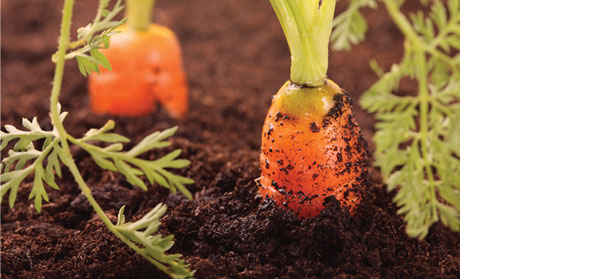
Dec 17, 2012Keeping muck soils sustainable takes monitoring
Muck soils are an economically important, non-renewable resource for Michigan agriculture. Satisfactory soil conservation and nutrient management practices are needed to sustain these soils for future crop production.
Muck soils are the result of a transformation of what was once a big lake or swamp into what is now a productive farm rich in black, organic soil. These soils, referred to as histosols (from Greek histos, “tissue”), are typically found in low-lying areas with high water tables and restricted drainage. Under anaerobic conditions, the rate of decomposition of plant remains (primarily sedges and mosses) is very slow. It takes nature about 500 years to accumulate 30 centimeters of organic soil.
Based on the level of decomposition, these soils are classified either as peat (slightly decomposed organic material) or muck (highly decomposed organic material). In Michigan, muck soils are found scattered in the Upper and Lower Peninsula. Globally, these soils occupy about 1.2 percent of the ice-free land area.
Organic soils have a chronic problem – they subside, or sink, at a steady rate. When intensively cropped, muck soil subsides at a rate of about 30 centimeters every 10 years, becoming progressively shallower. This is due to the oxidation of the organic matter, coupled with wind and soil erosion.
Considerable investment and skill are needed to develop and maintain muck soils for crop production. An obvious requirement is to improve drainage by using tile, dikes, ditches and pumps. Once drained, the muck soils are ideal for raising high-quality specialty crops such as carrots, onions, radishes, lettuces, potatoes and mint. The dark color warms the soil faster, and soil particles have low bulk density, helping root crops grow and mature faster.
Kunkle’s Muck Vegetable Farm in Eaton Rapids, Mich., is well known for its high-quality onions. To combat wind and soil erosion, windbreaks and ground covers are needed to protect the topsoil.
The sod industry of Michigan relies heavily on muck soils. Because the muck is organic and not mineral, “peeling” the turf off and rolling it up for shipment is much easier.
Muck soils differ greatly from mineral soils not just in their origin, but also in nutrient management. In contrast to mineral soils, maintaining a pH level of about 5.5 is satisfactory for most muck crops. Muck soils are rich in nitrogen; the average nitrogen recommendation is 60 pounds per acre less than the recommendation on mineral soils.
Muck soils are naturally low in boron, copper, manganese and zinc. A soil test is a valuable tool to determine the need for annual applications.
By George Silva, Michigan State University
















